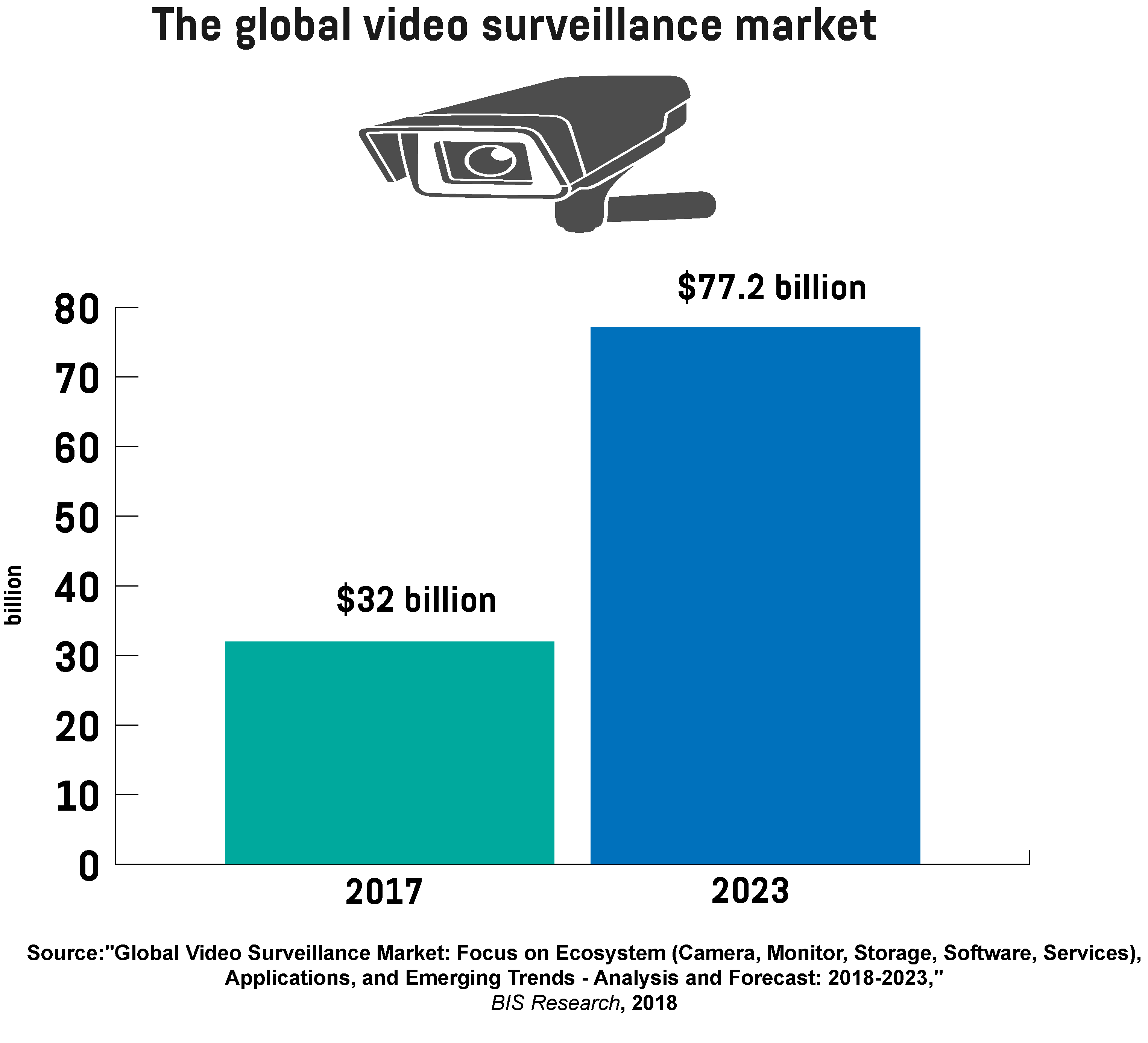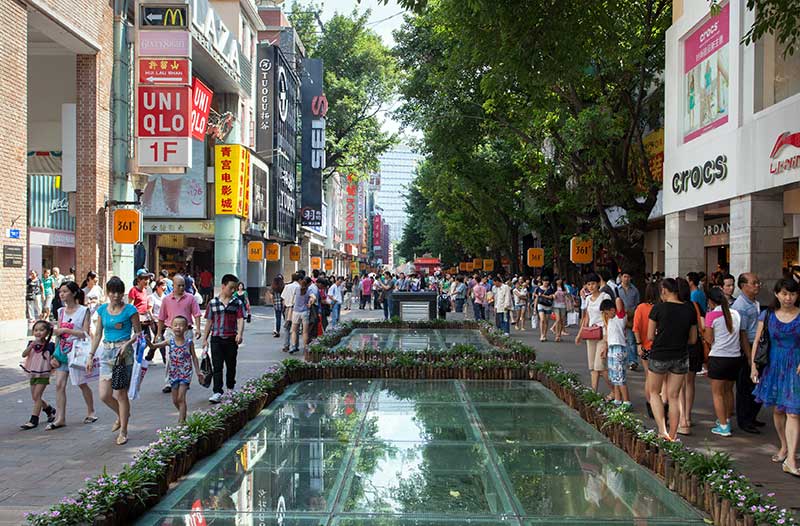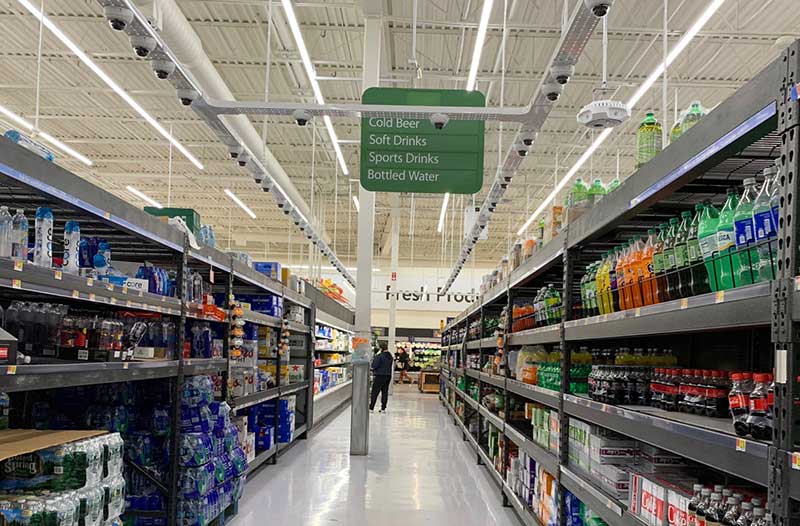- Gait recognition software identifies a person based on how they walk
- China’s emotional surveillance technology monitors workers’ brainwaves
- Walmart’s latest patent could eavesdrop on its employees and customers
- New Israeli technology could revolutionise surveillance
- Surveillance technology needs more regulation
- The future of surveillance technology
A typical surveillance system consisting of low-resolution cameras might have been useful a few years ago, but the world has changed drastically since then. For people who live in fear of terrorism and crime, having a few security cameras installed outside their home or within their city simply isn’t enough anymore. Since criminals have become more sophisticated, security systems had to evolve as well. To protect their citizens, governments are increasingly deploying surveillance systems and smart cameras embedded with artificial intelligence (AI), facial recognition, and motion-detection capabilities to detect suspicious behaviour and give officials enough forewarning.


It’s evident that surveillance has become a lucrative industry, and the market continues to grow. In 2017, the global video surveillance market was worth $32 billion, and it’s expected to reach $77.2 billion by 2023. While the Asia-Pacific region continues to be the leader in the video surveillance market, Europe is also putting some effort into the development of this tech, with countries such as the UK, France, and Germany being the biggest surveillance tech hubs in the EU. Thanks to new technologies, what used to be possible only in sci-fi movies has become our reality now. Innovative surveillance solutions are doing a good job in safeguarding residents, but people don’t want to be tracked everywhere they go, especially not without their knowledge. This is something that’s been raising privacy concerns for quite some time now, and governments need to address it.
Gait recognition software identifies a person based on how they walk
Though privacy concerns can’t be brushed aside, some countries are determined to step up their surveillance game. One of those countries is China, which has launched a new surveillance solution capable of identifying someone based on how they walk. This gait recognition software, developed by an AI company called Watrix, is already being used on the streets of Beijing and Shanghai to help Chinese police identify criminals in crowds. The software can identify a person from up to 50 metres away, even if they’re facing away or their face isn’t visible. Watrix’s solution works by extracting a person’s silhouette from video and analysing their movement. Based on the gathered data, it then creates a model of their walk. As Huang Yongzhen, the chief executive officer at Watrix, explains, “Gait analysis can’t be fooled by simply limping, walking with splayed feet or hunching over, because we’re analysing all the features of an entire body.” What makes the system particularly convenient for Chinese authorities is that it doesn’t need any special cameras and can use footage from existing surveillance cameras instead.

However, the software is far from perfect, and it’s still lagging in some areas. For instance, it’s not able to identify a person in real time, because the video needs to be uploaded into the software first. Once uploaded, it usually takes around 10 minutes for the software to identify a person in an hour of video. To accelerate the development of its gait recognition tech, Watrix gathered $20 million worth of funding in 2018.
China’s emotional surveillance technology monitors workers’ brainwaves
While Chinese police is tracking people by their gait, Chinese businesses are monitoring their employees’ emotions. The technology consists of wireless sensors placed in employees’ hats or safety helmets. These lightweight sensors, developed by the tech company Deayea, continuously monitor workers’ brainwaves and send the data to a computer. Once AI algorithms scan the data, the system can detect if a person is feeling anxious, sad, or angry with an accuracy of 90 per cent. This emotional surveillance technology is particularly useful for jobs that require high concentration, such as train drivers and workers in factories, where a distressed employee could easily jeopardise not just their own safety, but also the safety of others. So, when the staff isn’t feeling well and should be sent home, managers are notified immediately.
It’s not known how many employees are being monitored with this tech, but according to the South China Morning Post, the tech is currently being used by public transport, military, and some state-owned businesses. Moreover, it’s been tested in hospitals on patients, as well as on pilots to determine whether they’re emotionally capable of flying. Despite the fact that not everyone is happy about having their emotions monitored in the workplace, some companies claim it improved their employees’ productivity and boosted their profit. For instance, ever since State Grid Zhejiang Electric Power, a company with 40,000 employees, implemented the new surveillance tech into its business in 2014, the firm increased its revenue by $315 million. Another company experiencing a positive effect from using the emotional surveillance system is Ningbo Shenyang Logistics, which used the system in employee training. The company combined the solution with virtual reality (VR) headsets, which allowed it to increase its profit by $22 million. This has “significantly reduced the number of mistakes made by our workers”, the company’s manager, Zhao Binjian, tells the South China Morning Post.
Walmart’s latest patent could eavesdrop on its employees and customers
The US retailer Walmart is also interested in improving its business with surveillance tech. This company patented an audio surveillance system that involves installing audio sensors throughout its stores. Besides recording sounds such as beeps of scanners, the sensors could even pick up conversations between customers and employees. With this tech, Walmart would know if workers are doing their job efficiently. The retailer could easily find out if customers are greeted properly by the worker, and how much time they spend at the checkout counter. By having accurate performance metrics for each employee, the retailer could improve customers’ shopping experience.

Some believe this could have an adverse effect on employees. Ifeoma Ajunwa, an assistant professor at Cornell’s Industrial and Labor Relations School, claims that excessive use of surveillance can actually slow down workers and make them feel nervous because they’re being constantly monitored. Moreover, if Walmart decides to implement this tech into its stores, the company could face serious backlash from consumers as well, who probably won’t be thrilled with the idea of having their conversations recorded. In fact, in 12 US states, all of which have Walmart’s stores, recording someone’s voice without their consent is illegal. Ragan Dickens, Walmart’s director of corporate communications, claims the company won’t neglect these privacy concerns, and that all employees will be notified before Walmart installs these sound sensors. “I can assure you if the concept became a reality, we would comply with state and local laws,” says Dickens. It’s not revealed how much the system will cost, and when the company would start using it.
New Israeli technology could revolutionise surveillance
A less invasive technology comes from two Israeli companies, Photuro and Mantis Vision, which presented their latest solution at the Ayalon Mall in Tel Aviv. Their 3-dimensional photography booth was equipped with 3D cameras that can determine a person’s accurate measurements, including height, width, and even “the thickness of your palm”. The booth was equipped with 22 cameras and high-quality lighting, allowing visitors to create their own digital models, or avatars. Before they step into the kiosk, visitors were required to fill out a form and select the right image specifications. The technology can photograph five people simultaneously, and it can create a highly accurate digital image of the person in a couple of seconds. Although the tech is relatively new, there’s already a great deal of interest in using it in various sectors, such as robotics and shipping, while it’s especially well suited for the needs of the surveillance industry. For instance, this, innovation could be used for creating a 3D database of suspected criminals, and 3D cameras could “capture anyone trying to [get into a specific location] without them needing to be [motionless]”. By capturing people’s faces and bodies, these cameras could help police and authorities to create criminals’ biometric signature.
Surveillance technology needs more regulation
Further advances in the field will make surveillance systems inexpensive and easy to deploy, which will encourage more governments to implement them. But such widespread deployment of surveillance tech poses a threat to our privacy. The American Civil Liberties Union (ACLU) has already joined forces with several other organisations and “civil rights and racial justice partners” to warn tech companies to stop selling their surveillance tech to government agencies. Residents are also forcing cities around the world to regulate surveillance technologies.

For instance, the city of Cambridge in the US state of Massachusetts issued a regulation that requires city departments that want to deploy surveillance systems to report how they would use the tech, its capabilities, and what kind of data it would store. A similar regulation has been approved by the Davis City Council in California, which orders any city department or agency to first prove that surveillance tech “will do more good than any possible harm to civil liberties”.
But the problem isn’t just with technologies such as cameras or audio sensors. Today, social networks are also being used as surveillance tools. Take Facebook as an example. Facebook is known for gathering and linking user data across different platforms without users’ consent. But the German Federal Cartel Office recently ordered Facebook “to change how it processes users’ personal data”. Once the decision comes into force, Facebook will be prohibited from collecting user data unless the user gives their consent.
The future of surveillance technology
Surveillance technology has become a valuable weapon in our fight against crime. But since surveillance systems give a lot of power to governments, there’s always a chance that someone will abuse it. Besides monitoring and detecting criminals on the streets, surveillance tech could easily be used for tracking everything else. Smart cameras installed throughout the city could track you while you go to work, then monitor you in the workplace. High-tech surveillance systems could identify you in a crowd of thousands of people, and with just a few clicks, authorities would get access to a complete file about your life and daily activities. It seems that as surveillance tech keeps progressing, the world is increasingly experiencing an intrusion of privacy. In the future, are we going to fight against crime and for the right of privacy at the same time?
Share via:


